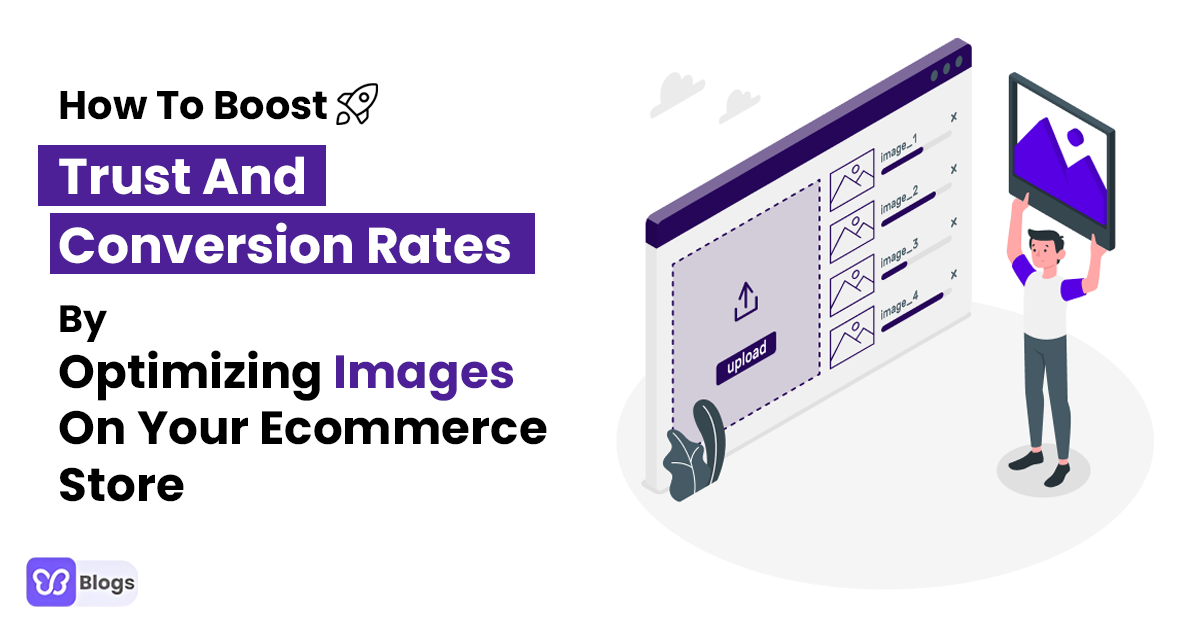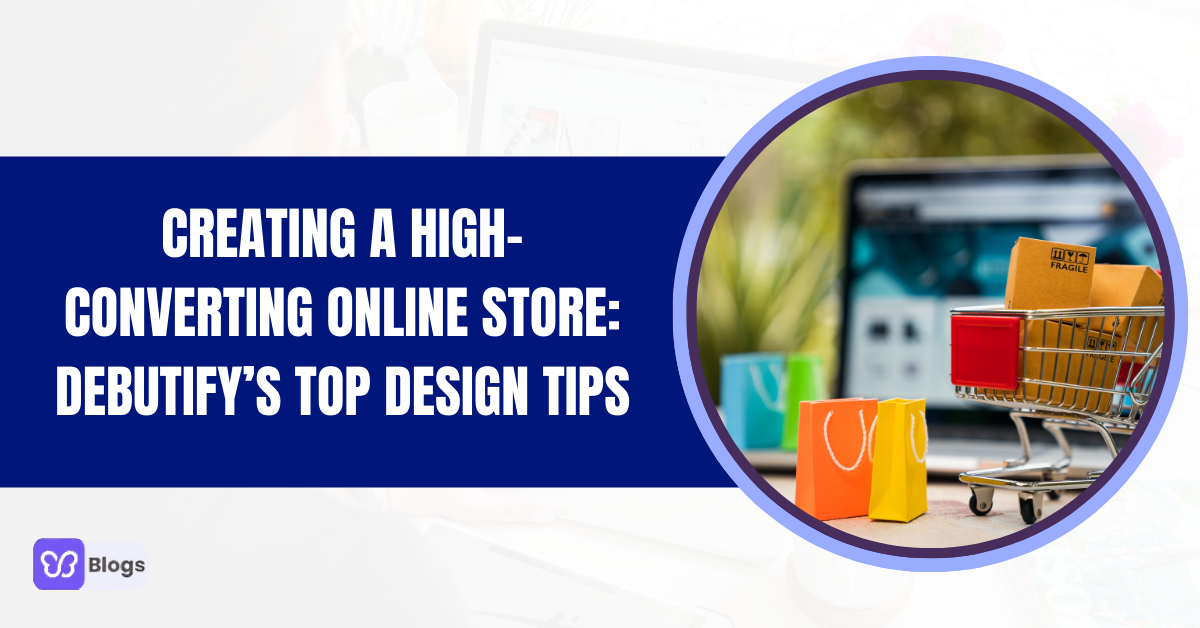Ever searched for your products on Google and wondered why your images don’t show up? Or noticed your site slowing down because of oversized pictures on your landing page?
Unoptimized images hurt more than just site speed. They damage user experience, lower search visibility, and can cause a serious drop in conversions.
Your product images play a huge role in building trust. If they’re not clear, fast-loading, and properly formatted, you risk losing customers before they even click “buy.”
So what’s the right image size? Should you compress files? Which format works best?
In this guide, we’ll answer those questions and share the best practices to optimize your images for both performance and conversions.
Why Are High-Quality Images So Important For Conversions?
This is how a typical customer journey appears when you visit any brick-and-mortar store:
- You enter a shop
- Go to your desired section/aisle
- Touch products (even check a few in a changing room if it's fashion products)
- Go to the counter and pay cash
Now, let’s turn this into an online customer journey...
- You enter a website
- Search items
- Read descriptions and gauge images
- Move forward and make a payment
Noticed something?
Your 3-4 step online customer journey is incomplete without product images.
Now, imagine displaying low-quality, blurred images on your site.
Who is going to trust your offers? No one, right?
With properly optimized images, you can:
- Capture your buyer’s attention
- Make your product images appear in search engines
- Improve your CTRs
- Reduce cart abandonment
- Improve your site load time
- Improve usability and website performance
- Boosts trust and credibility
- Reduces risk of returns and refunds
- Increase sales and ROI
Whoa! That’s a pretty long list…
But that’s what exactly you get when you optimize your images. ?
Remember…
Customers no longer want to browse websites- they want to experience them.
Here are a few image optimization tips you can use to boost your ecommerce conversions…
Use Different Angles And Perspectives
That cute palm sweater catch your attention?
But before you buy it, you would want to know more about this product, right?
So, displaying images that show the product from different angles and perspectives reduces doubts.
Ask yourself the same questions a buyer would ask when looking at the product.
What does the back of the sweater look like?
What is the exact length of this sweater?
These questions, when answered, can boost confidence and drive conversions.
See how intelligently Next has crafted its product pages.
You can also do the same…
Here's another tip you can try...
Portray Special Features
As they say, it is all in the details.
Customers don't buy a product. What they buy are the features that come with it.
Let's take the example of the brand violetrayny. They have an amazing collection of handbags, satchels, cross bodies, and clutches.
What makes their product pages stand out are their product images.
Besides displaying huge, bright product images, they also portray the inside/back/side of each product.
(Source)
When you buy anything from their site, you already know what you're buying.
How awesome is that?
What else can you try? Let’s find out...
High Resolution Is A MUST
A low-quality and blurry picture can turn any customer away. As said above, the customer expectations depend on your product images.
High-resolution images help your visitors make up their minds. Also, it will give them a better idea of how your product looks in real-time.
Blurry and dull images shatter the trust of potential customers. Do I need to say it will also ruin your conversions?
Both mobile and desktop users will see your images. So, ensure everyone gets to see the same picture quality.
Worried about the loading speed of your store?
In that case, image compression should be your best friend.
With this tool, you can reduce the file size without compromising the quality.
The best part?
It won’t affect your page load speed either.
Do Clever Cropping
There is no one-size-fits-all rule when it comes to cropping. Each platform has its own requirements.
For example, on Amazon, you need to cover 85% of the image frame with the product itself.
Even if you’re posting on your platform, minimize the white area around your images.
Having white space will kill the look of your images.
Zibbit explained it really well...
(Source: Zibbit)
Use Clear Background (or get creative with it!)
Again, if you’re selling on Amazon, you need to have a white background for your pictures.
Some channels do not allow any background patterns or accessories. In fact, you can’t even add your brand logo or extra text.
I don’t personally dislike this approach. Displaying images on a clean background gives your visitors an idea of how your products look in real life.
Injinji is one of my favorite brands.
What they do is edit out backgrounds from their images altogether.
Yes, they don’t even have a white background in their images.
That’s how products appear on their product pages.
Nice, isn’t it?
But I don’t mind experimenting with creative patterns either. The condition is they should add more value and vibrancy to the images.
Now, what you should choose depends on how creative you can go with your ideas.
Looking for inspiration?
Check this out…
Are you thinking what I am thinking?
Wow!!! ?
The next thing you can do is...
Help Your Viewers Know The Size
Customers judge products based on three factors:
- Beauty
- Consistency
- Accuracy
You can create the best first impression if your products are beautiful.
If you're consistent in what you offer, you can provide your buyers with the best customer journey.
And now comes the most important factor - accuracy.
If your information is accurate, your customers will trust you forever.
It's common for brands to have multiple sizes of different products. It shouldn't be an issue for you if you sell clothes. You can have a size chart for that.
But what if you sell handbags or jewelry?
You can't always put measurements on your page to explain sizes.
Then how can you help your buyers know the exact product sizes?
I will show you...
You can adjust image margins.
See how Rebecca Minkoff has displayed products using this technique.
Another trick you can use is to display models carrying your products. This tactic is more useful when you want your buyers to make quick comparisons.
(Source)
Don't want your customers to return products because of the wrong sizes?
Use these tactics right away.
Up next is...
Use Mosaic
This one's my favorite.
Try a mosaic if you want to display different angles of your product in a single image.
Once you know how to present images, it's time to...
Know Your Files
What file type should you choose to save your images?
PNG? JPEG? GIF?
Did you know about them?
No? Let me explain...
JPEG files allow for the “display of millions of colors.”
You can’t display as many colors as you can display with JPEG file type. Also, these files are adjustable.
When you adjust the file size, you also adjust its quality.
When should you use JPEG? When you have a huge product range of different colors.
While PNGs are larger than JPEG files. Also, they offer better quality. But you can’t use them if the file size is a concern for you.
You can use PNGs when image quality matters more to you than its size. If you have animations or small images on your website, GIFs can be your safest bid.
If you ask me to choose among these three, I’d go with JPEG for ecommerce sites.
Why? Because this file type offers a perfect balance between size and quality.
Always Name Your Files Correctly
Do you want search engines to find your product images?
Then you should name your files based on their descriptions.
Okay, let me give you a minor challenge.
Can you find the headset image you saved last Saturday in this directory?
#01000501
#01000502
#01000503
#01000504
No? So, don't forget to name your images.
Because you can't expect search engines to find and interpret them for you.
Besides that, make sure you...
Stop Using Cheesy Stock Images
Today’s customers are more clever than ever before. They take no time to spot cheesy stock images on your websites.
They will not convert if they find two unknown men shaking hands in a suit on your website. So if you want to boost ecommerce conversions, use custom images.
Or if you want to use stock images, at least try to use them smartly.
We’re down to our last trip now...
Use A Mascot
Cartoons are cool and classy.
That's why many brands consider using a mascot for their branding.
Whether it’s Mr. Peanut by Planters or Mr. Clean by Procter & Gamble, mascots are impactful.
With mascots, you can solidify your marketing strategy. Not only this, but this tactic will also help you create an ever-lasting emotional effect on your customers.
Mascots should be part of your branding strategy for two reasons.
First, it is easier and more affordable to create them. Second, you can use mascots to create a strong bond with your site users.
It’s About Your Customers, Not You…
Want to boost ecommerce conversions?
Master the art of creating and optimizing product images.
Think out-of-the-box ideas. Experiment with different options. And come up with solutions that attract and inspire your customers.




